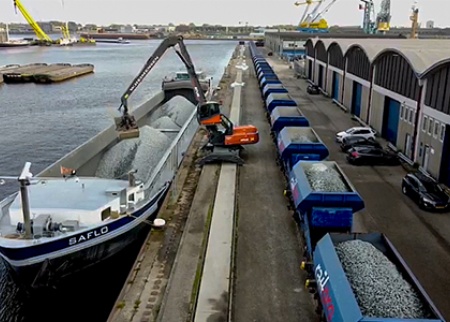More efficiency in the logistics of rail ballast transport
The transport of rail ballast from quarry towards railway is a complex logistic process. We reached a great milestone in terms of efficiency and sustainability by bringing together several processes in one location in Amsterdam. The port area in the Western part of the city can, in the easiest way possible, directly provide all modalities and facilities for the distribution of the ballast throughout the country.
